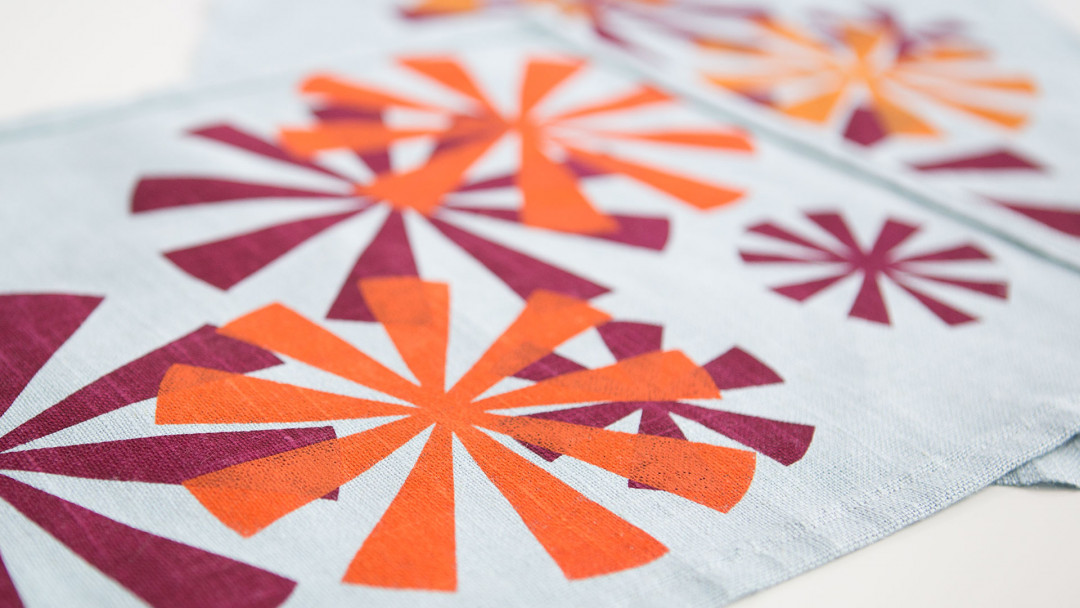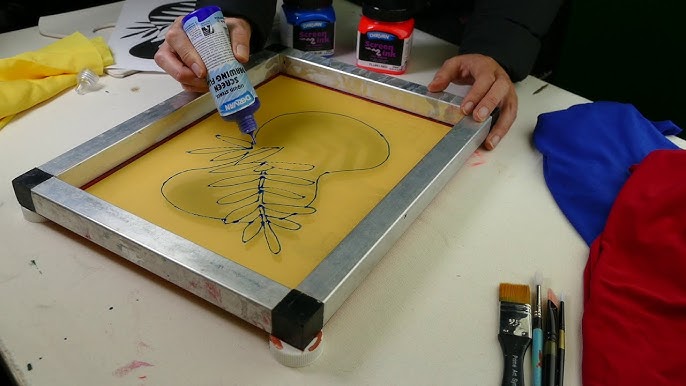From Style to Shipment: Understanding the Art of T-Shirt Screen Printing
The trip from design to shipment in t-shirt screen printing includes a collection of critical points that require focus to detail and strategic planning. It begins with understanding the nuances of your target market, complied with by the selection of appropriate materials and the preparation of artwork that satisfies high criteria. Yet, as the process unfolds, obstacles in quality assurance and logistics can emerge, potentially affecting the final result. Checking out these intricacies reveals not only the details of screen printing but likewise the crucial methods that can boost a brand's standing in an open market.
Understanding T-Shirt Screen Printing
Recognizing T-Shirt screen printing involves identifying a functional and extensively made use of method for moving designs onto material. This method makes use of a pattern and a mesh screen to use ink onto different fabric materials, primarily cotton and polyester blends. The procedure begins with the creation of a screen that features the preferred design, which is after that meticulously straightened on the fabric.
Ink is pushed via the screen's open locations using a squeegee, permitting precise application of shade. This approach is favored for its ability to generate dynamic, durable prints that hold up well to cleaning and use. Furthermore, screen printing is capable of accommodating both complex and basic designs, making it a preferred choice for personalized apparel, marketing items, and even artistic jobs.
Screen printing provides scalability, making it suitable for both little set orders and massive productions. While initial setup costs may be higher compared to other printing methods, the effectiveness and sturdiness of screen printing often validate the financial investment. In general, recognizing the basics of Tee shirts screen printing is important for anyone aiming to involve in this prominent type of textile design, whether for business endeavors or individual tasks.
Conceptualizing Your Layout
Conceiving your layout is an essential action in the T-shirt screen printing procedure, as it sets the foundation for the whole project. This stage entails generating concepts that resonate with your target audience while guaranteeing that the design straightens with the brand's identification and message. It is vital to start by exploring motifs, color pattern, and graphics that mirror the intended aesthetic.
Sketching initial principles can be beneficial, allowing for a visual depiction of ideas before completing the design (T-Shirt Printing). Think about using typography, imagery, and design in such a way that captures focus and communicates successfully. On top of that, it is critical to prepare for the printing strategy that will certainly be utilized, as this can affect design complexity and shade selections
Taking part in brainstorming sessions with employee or looking for comments from prospective customers can also enhance the concept process, providing varied point of views that fine-tune the layout. Ultimately, a well-thought-out design not just enhances the visual charm of the T-shirt yet also promotes a link with the target market, driving passion and potential sales. Consequently, committing time to conceptualize your layout can bring about an effective screen printing outcome.
Picking the Right Products
When picking the appropriate products for Tee shirts screen printing, it is important to consider the textile's structure, make-up, and weight, as these aspects considerably influence the end product's quality and feel. Cotton is a popular option as a result of its breathability, capability, and softness to absorb ink properly, making it excellent for lively prints - T-Shirt Printing. Blends, such as cotton-polyester, deal durability and wrinkle resistance, yet may affect ink adherence, requiring careful factor to consider of printing methods
The weight of the material, normally determined in grams per square meter (GSM), affects the drape and general feeling of the T-shirt. Heavier textiles might offer a much more exceptional appearance, while lighter choices fit for laid-back wear. Structure also plays a function; smoother textiles tend to yield sharper prints, while textured surfaces can create distinct visual impacts.
Additionally, think about the ecological impact of materials. Organic cotton and recycled polyester are acquiring popularity amongst eco-conscious customers. Inevitably, choosing the best products includes stabilizing aesthetic allure, performance, and sustainability, making certain that the T-shirt not just looks terrific however also fulfills the assumptions of your target market.
Preparing Artwork for Printing

Preparing art work for T-shirt screen printing requires cautious attention to detail to ensure that the final print precisely shows the intended layout. The very first step is to develop a high-resolution electronic file, ideally in vector style, as this enables scalability without loss of quality. Typical software utilized for this purpose includes Adobe Illustrator and CorelDRAW.

Think about the dimensions of the print location and preserve appropriate margins to stay clear of style cutoff. It's additionally smart to consist of registration marks for placement throughout the printing process. Demand a proof from the printer to envision the last product before mass production. This step is essential for recognizing any potential problems, guaranteeing that the printed Tee shirts satisfies the preferred quality and style requirements. Appropriate prep work of artwork greatly affects the general success of the screen printing project.
Mastering the Printing Process

Next off, selecting the best ink is necessary. Different ink kinds, such as plastisol or water-based, offer numerous coatings and longevity. Recognizing the fabric composition of useful content the Tees likewise aids in selecting suitable inks.
Controlling the squeegee stress and angle is essential when it comes to the actual printing. Constant stress will certainly yield even ink distribution, while the angle influences the flow and protection. Additionally, readjusting the rate of the printing machine can impact the ink's treating process, which is fundamental for ensuring longevity.
Quality Assurance and Finishing
After the printing process is full, carrying out reliable top quality control procedures ends up being essential to validate that each T-shirt fulfills the wanted requirements. Quality control entails a systematic approach to evaluating each garment for defects, validating that the print top quality, shade precision, and fabric integrity align with the requirements established during the design stage.
The primary step in quality assurance is a detailed aesthetic inspection. This involves monitoring for common problems such as imbalance, ink smudges, or fading. Any kind of Tee shirts that does not satisfy the high quality benchmarks must be addressed without delay, either via reprinting or repair.
In addition to aesthetic checks, it is necessary to perform wash examinations on a sample of printed shirts to analyze the durability of the inks and the general durability of the layout. These examinations aid verify that the print will certainly maintain its vibrancy and stability after multiple cleans, an essential aspect for consumer complete satisfaction.
Ending up touches, such as thread trimming and the application of treatment tags, additionally play a considerable function in quality control. By concentrating on these facets, services can improve the general presentation of their items, eventually leading to a much more enjoyable customer experience.
Product Packaging and Delivery Solutions
Efficient packaging and shipment options are vital elements of the T-shirt screen printing procedure, as they assure that garments come to their destination in pristine condition. Correct packaging not only safeguards the published styles yet additionally boosts the unboxing experience for customers, reinforcing brand name identity and professionalism and reliability.
To achieve ideal packaging, consider utilizing environmentally friendly materials that align with sustainability fads, such as recyclable poly bags or eco-friendly boxes. Each Tees need to be nicely folded up and placed in safety wrapping to stop creasing and possible damages during transit. Consisting of a branded insert or care guidelines can additionally personalize the experience, cultivating consumer commitment.
Choosing a trusted delivery companion is necessary when it comes to distribution. Examine options based upon speed, expense, and tracking capabilities. Providing multiple delivery techniques can accommodate various client requirements, from typical to expedited delivery.
Often Asked Inquiries
What Are the Common Blunders Novices Make in Screen Printing?
Usual blunders newbies make in screen printing include inappropriate screen prep work, insufficient ink mixing, wrong exposure times, insufficient healing, and disregarding to examine prints. These errors can bring about low quality and unsatisfactory lead to final items.
How Can I Avoid Ink From Blood Loss Throughout Printing?
To stop ink bleeding during printing, guarantee appropriate screen stress, use appropriate emulsion density, choose the right ink uniformity, maintain optimal healing temperatures, and stay clear of overloading the screen with extreme ink during application.
What Sorts of Inks Are Ideal for Different Fabrics?
Selecting inks based on material kind is essential. Water-based inks are perfect for cotton, giving soft qualities. Plastisol inks match synthetic materials, offering longevity (10:9 Design Business Branding Solutions). Discharge inks efficiently blend with natural fibers, guaranteeing lively colors without jeopardizing textile integrity
Exactly how Do I Choose the Right Screen Mesh Matter?
Selecting the appropriate screen mesh count depends on the preferred print detail and ink type. Greater mesh matters yield finer information, while reduced counts help with thicker inks. Assess textile kind and design intricacy for perfect results.
Can I Use Screen Printing for Tiny Set Orders?
Yes, screen printing can be efficiently utilized for tiny batch orders. 10:9 Design Business Branding Solutions. This technique permits for detailed layouts and high-grade results, making it a feasible option for personalized garments, promotional products, or restricted version runs
Comprehending T-Shirt screen printing entails recognizing a flexible and extensively made use of approach for moving designs onto material. While preliminary configuration expenses might be higher contrasted to various other printing techniques, the efficiency and resilience of screen printing commonly warrant the financial investment. Preparing artwork for Tee shirts screen printing needs careful attention to information to assure that the last print precisely shows the designated design. Mastering the printing process is essential for achieving high-grade results in T-shirt screen printing. Usual blunders beginners make in screen printing consist of incorrect screen prep work, poor ink mixing, wrong exposure times, insufficient curing, and disregarding to check prints.